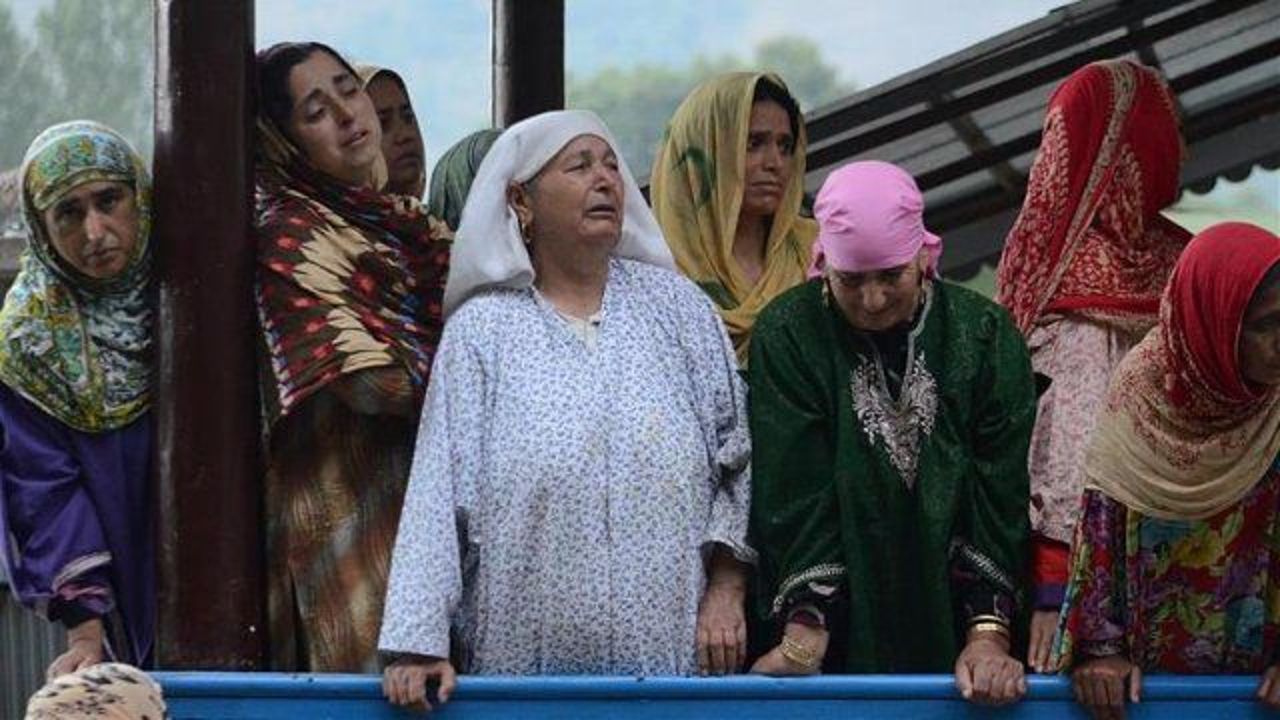Deadly clashes stoke Kashmiri fury
As the death toll has risen in Kashmir, so has the fury that has mounted by the hour and spread throughout the disputed Himalayan region in the wake of the killing of a young Kashmiri militant commander.

At least 21 Kashmiri youths have been killed and hundreds injured after Indian forces opened fire during clashes that have continued into Sunday, despite the attempts of Indian authorities to temper the mood by imposing a curfew and heavily restricting phone and internet communication.
The protests have intensified all across Kashmir with people attacking police and security forces camps with sticks and stones and setting 10 of them ablaze.
“People are coming out everywhere. There is not a region where people are not out on the streets and we are barely in control of the situation in many places while in most of south Kashmir I don’t know if we have any control at all,” a senior officer in the Indian police told Anadolu Agency on condition of anonymity, as they were not authorized to speak to media.
The tension began as news emerged that the popular pro-independence militant Burhan Muzaffar Wani, 22, was killed in a gunfight with Indian forces in the Kokernag area of south Kashmir.
In small groups, people left from their villages across the south Kashmir to reach Wani’s hometown Tral, where he was to be buried. Soon afterward, people also left for Tral from the capital city Srinagar and from north and central Kashmir, in cars and on motorbikes.
By the time Wani’s body arrived in Tral at 2.25 a.m., more than 5,000 were already waiting and by Saturday noon, more than 200,000 people had arrived for the funeral prayers, making it the largest funeral held in Kashmir over the last two decades and reminding many of the early 1990s, when a slain militant’s funeral brought hundreds of thousands of people.
“We had made preparation for the areas we expected trouble in, but this time people came out in far away and fringe places and we had not prepared for that. And we will need to find the reasons for that,” SM Sahai, the intelligence chief for Jammu & Kashmir Police, told reporters in Srinagar.
By the time Wani was buried at 3 p.m., there were heavy clashes across Kashmir between civilians and Indian forces.
The overwhelming outpouring of grief and anger at Wani's killing has led to speculation that it could see homegrown Kashmiri militancy refocus, after it was mostly put down by 2002 and a return was written off by Indian authorities and experts.
Wani had been an anonymous 15-year-old when he left his home to become a militant but by the time his bloodied body returned to his hometown he had become a household name. He became the face for the Kashmiri militancy by using social media to publish photos and videos of the militant life, most recently using it to promise they would not attack a Hindu pilgrimage as the Indian state was their target.
“He brought militancy back into the popular imagination from where it had fallen off over the past decade and made thousands of young people angry with India look up to him,” a senior police officer told Anadolu Agency.
Mirwaiz Umar Farooq, a senior resistance leader and religious figure told Anadolu Agency: “The huge response to Burhan’s killing is a clear sign of what the Kashmiri people want.”
The Indian-backed political leadership expressed grief at the civilian killings and appealed to the parents in Kashmir to stop their children from going out onto the streets.
“We appeal to all the political stake holders and the parents to help the government in bringing back normalcy as soon as possible,” government spokesperson and senior minister Naeem Akhter told reporters on Sunday.
Kashmir, a Muslim-majority Himalayan region, is held by India and Pakistan in parts and claimed by both in full.
The two countries have fought three wars -- in 1948, 1965 and 1971 -- since they were partitioned in 1947, two of which were fought over Kashmir.
Since 1989, Kashmiri resistance groups in IHK have been fighting against Indian rule for independence or for unification with neighboring Pakistan.
More than 70,000 Kashmiris have been killed so far in the violence, most of them by Indian forces. India maintains over half a million soldiers in the IHK.
A part of Kashmir is also held by China.
Anadolu Agency







